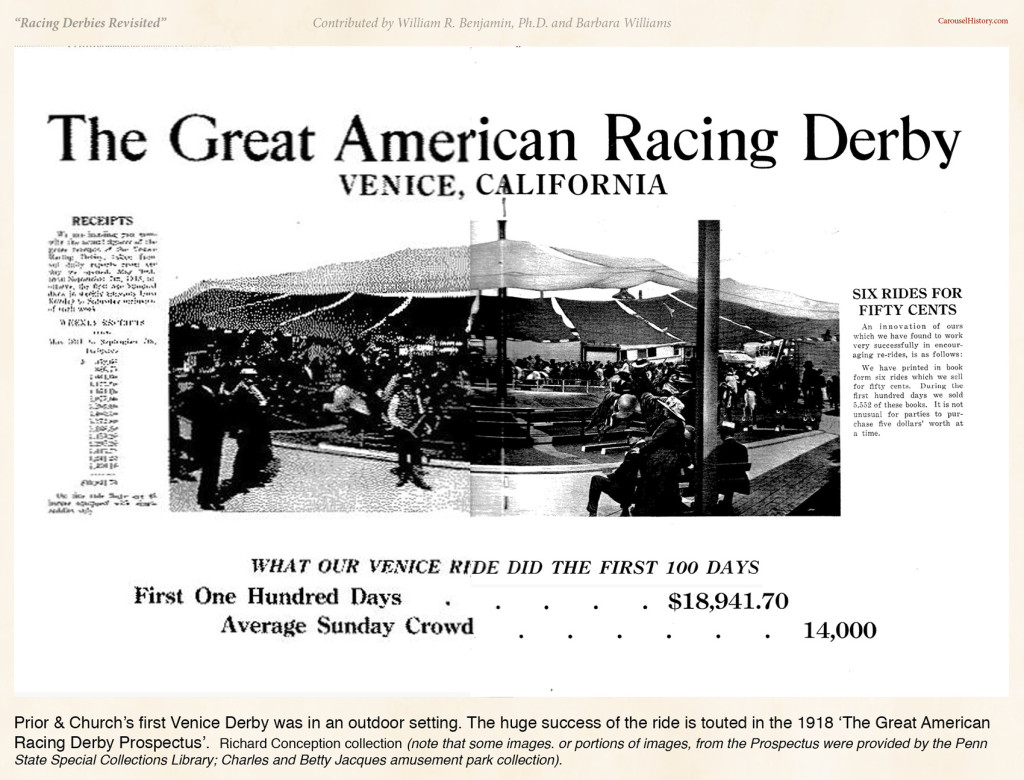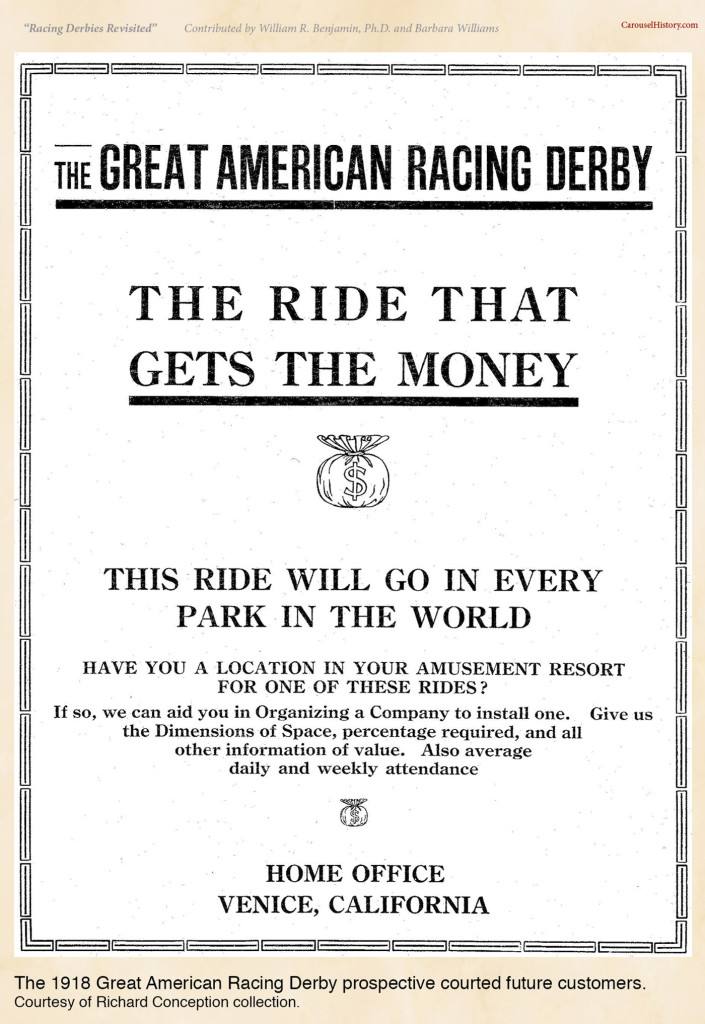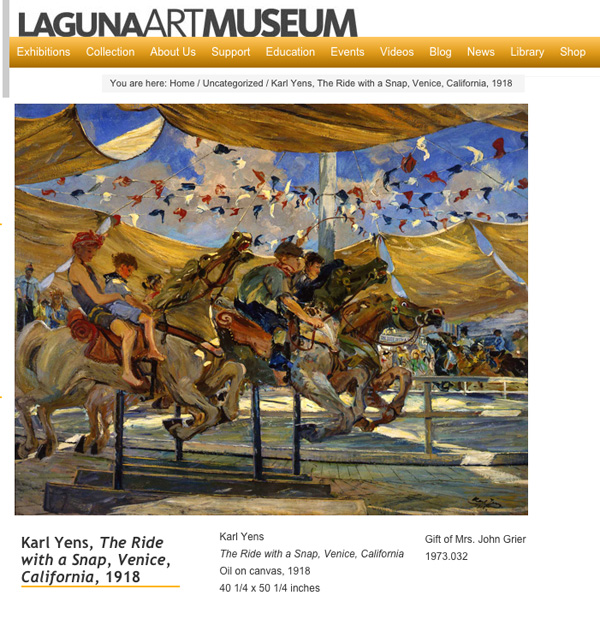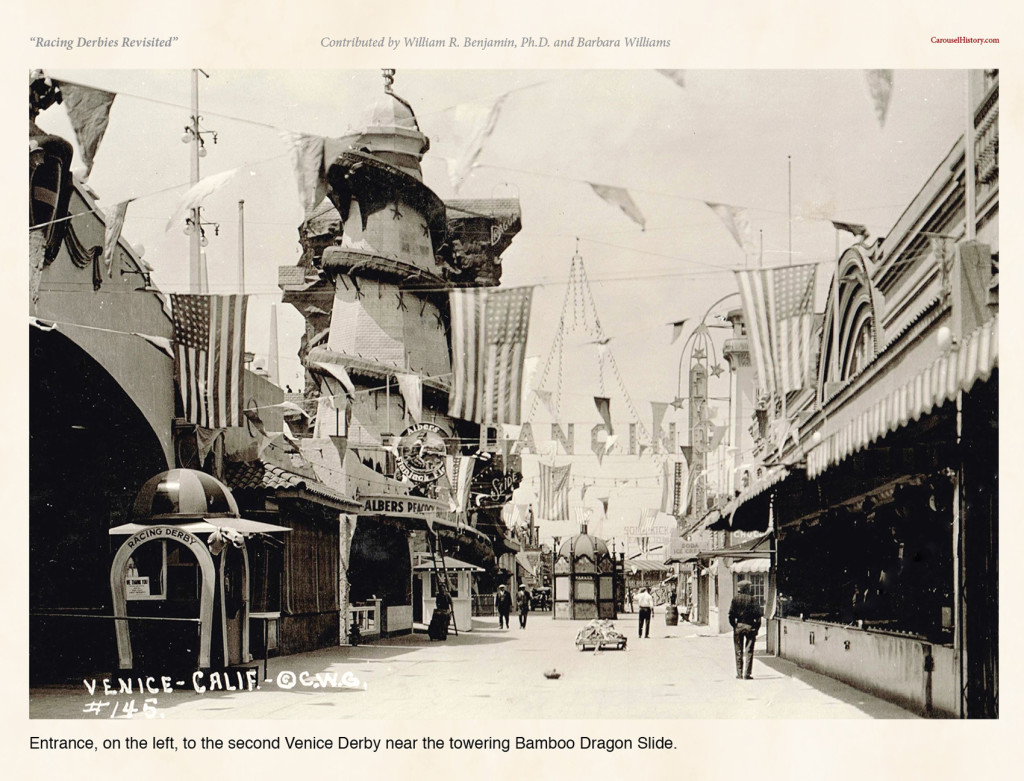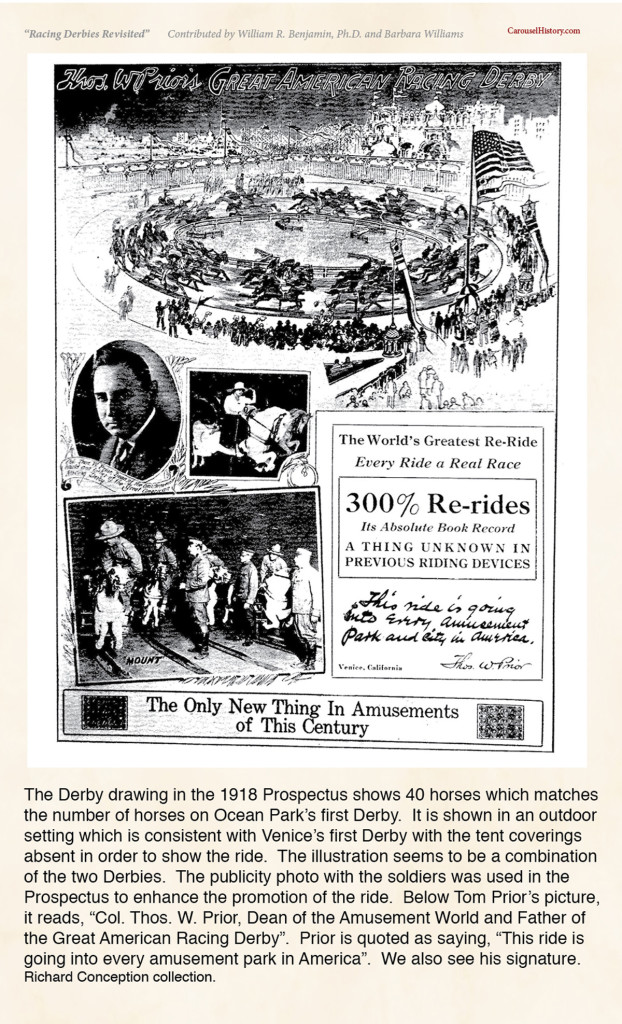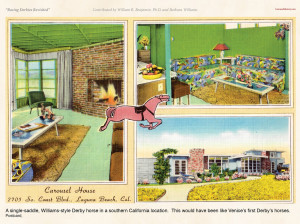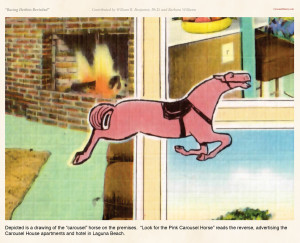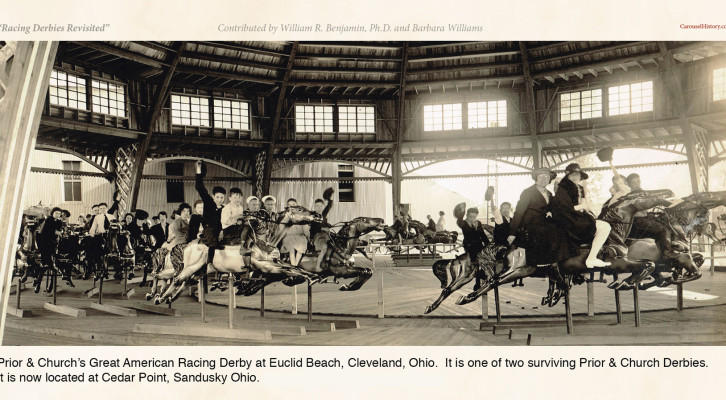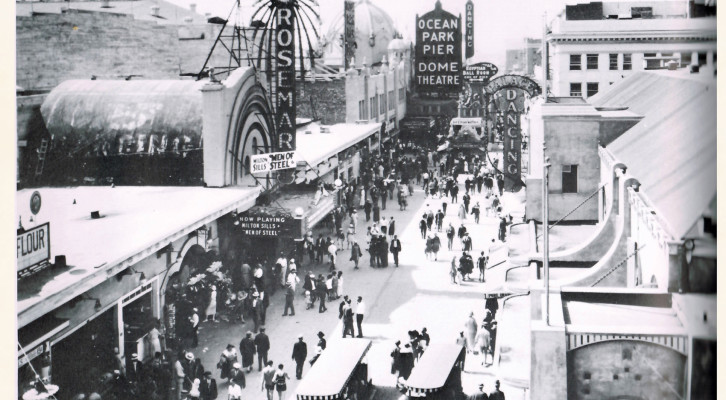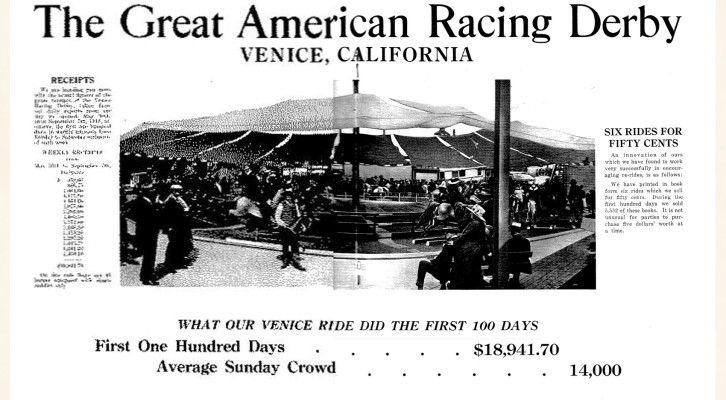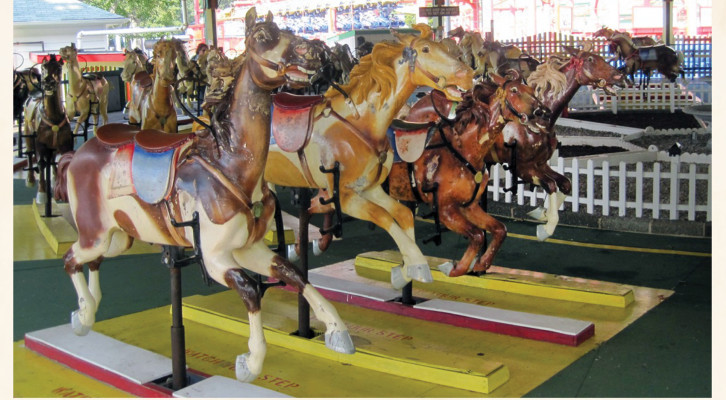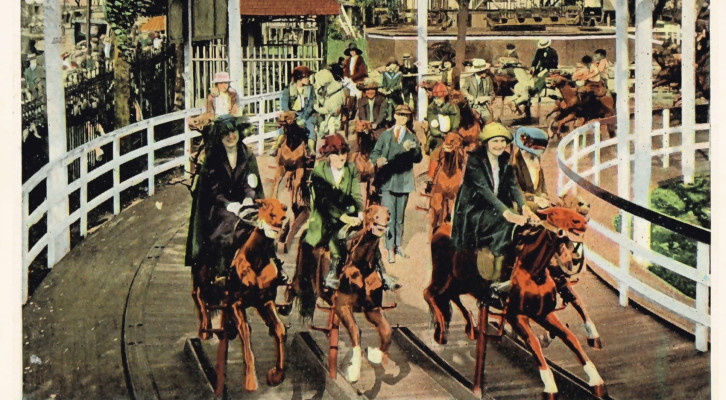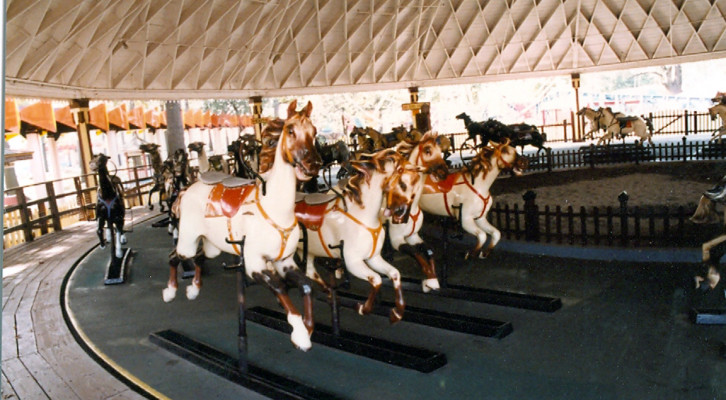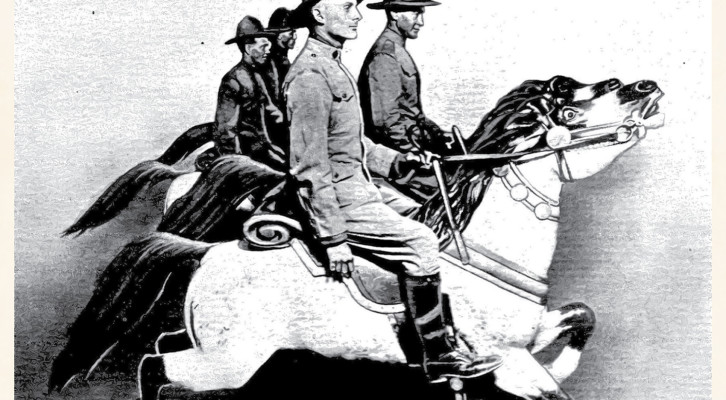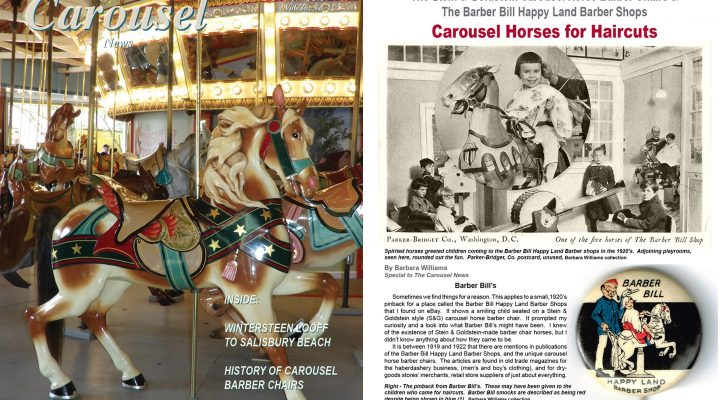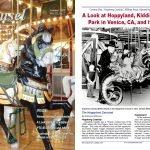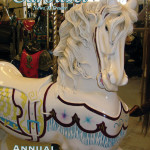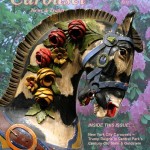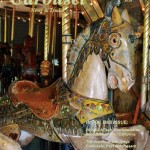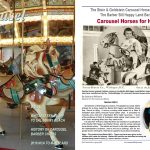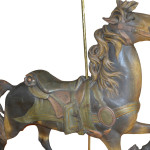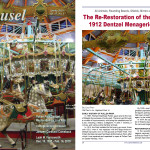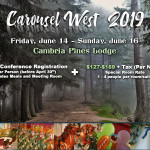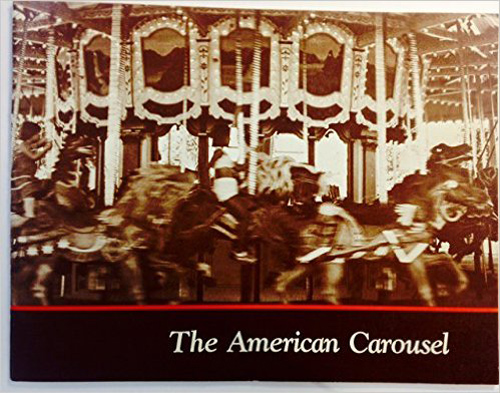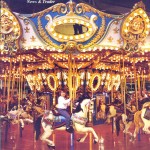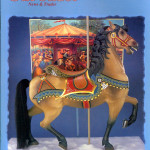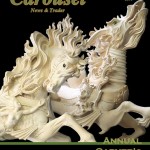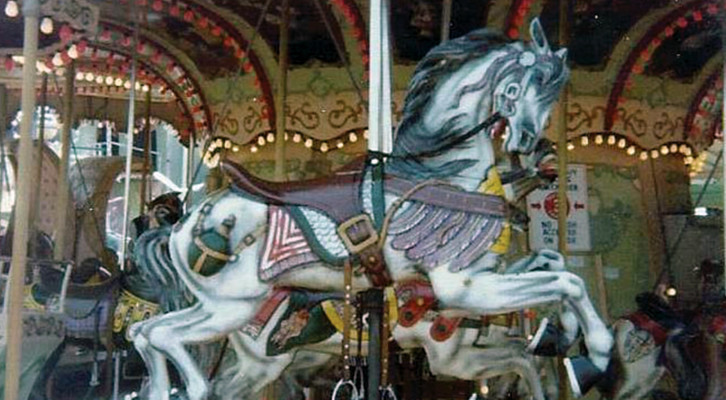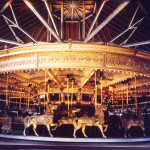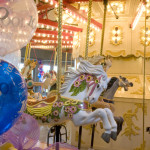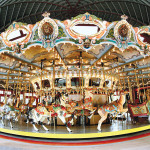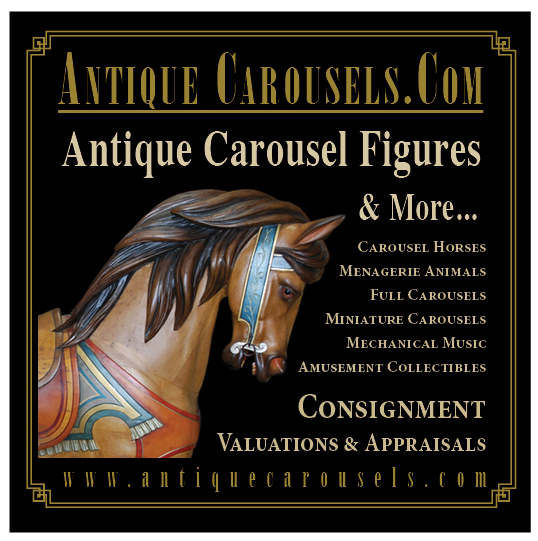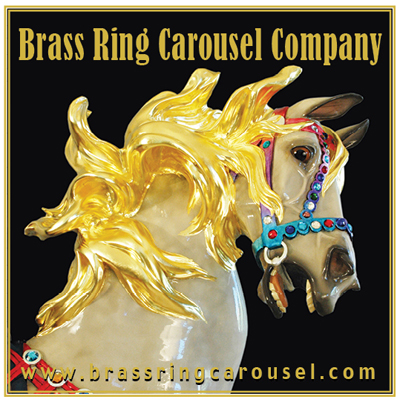Racing Derbies Revisited – Part 3 – Venice Pier
“The Race Thru the Clouds” and the Two Racing Derby Rides of Venice, CA
Prior & Church’s first Venice Derby (above) was in an outdoor setting. The huge success of the ride is touted in the 1918 The Great American Racing Derby Prospectus. Richard Conception collection (note that some images. or portions of images, from the Prospectus were provided by the Penn State Special Collections Library; Charles and Betty Jacques amusement park collection).
Venice Derbies
After installing a Derby ride at Ocean Park in 1916, Prior & Church did the same at Venice in 1917. We were unable to locate an actual opening date. Prior contracted with Abbott Kinney for the best spot on the pier for the new Derby, to be the largest circular amusement device ever invented. It was a bigger ride, 315 feet in circumference with horses described as being almost natural in size, with bodies being 50 to 51 inches long and 14 inches wide with the total length being almost seven feet. (34)
In the center of the Derby were scenic panels representing the inside of a race course with fences and hurdles that revolved in the opposite direction, creating the impression that the horses were racing at break-neck speed.
The gaiety of the ride is captured in a 1918 painting by Karl Yens entitled “The Ride With The Snap” seen here at the Laguna Beach (CA) Art Museum.
The horse motion was considered so life-like that Prior negotiated with the United States government for installation of Derbies at military encampments for the training of cavalrymen who were inexperienced in horseback riding. We don’t know if this ever came to fruition. But, this explains the publicity photo taken at the Ocean Park Derby with WWI soldiers preparing for a Derby ride(34).
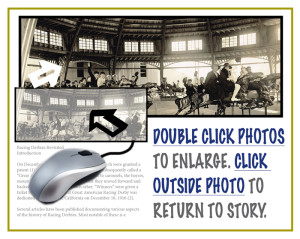 Prior and Church ran into problems with the Derby at Venice almost immediately, unrelated to the ride itself, which was hugely popular, with 211,993 riders between June and September of that year. This issue was opposition to games of chance. With “winning” horses – those who were positioned ahead of others within their groups, and a “winning” reward – a free ride – it came under scrutiny of gambling restrictions affecting games of chance imposed by certain politicians. Prior remained at odds with the powers that be over this until a fateful fire on December 20, 1920 destroyed the ride(4).
Prior and Church ran into problems with the Derby at Venice almost immediately, unrelated to the ride itself, which was hugely popular, with 211,993 riders between June and September of that year. This issue was opposition to games of chance. With “winning” horses – those who were positioned ahead of others within their groups, and a “winning” reward – a free ride – it came under scrutiny of gambling restrictions affecting games of chance imposed by certain politicians. Prior remained at odds with the powers that be over this until a fateful fire on December 20, 1920 destroyed the ride(4).
The Venice Pier fire of 1920 incinerated the pier and its attractions – “Every concession and amusement place was reduced to ashes… Estimated losses – Dance Pavilion – $75,000; Ship Café – $25,000; Auditorium – $50,000; Racing Derby – $100,000… The city of Venice was saved, it is believed, only by a timely turn of the wind(35).”
Venice’s Second Derby
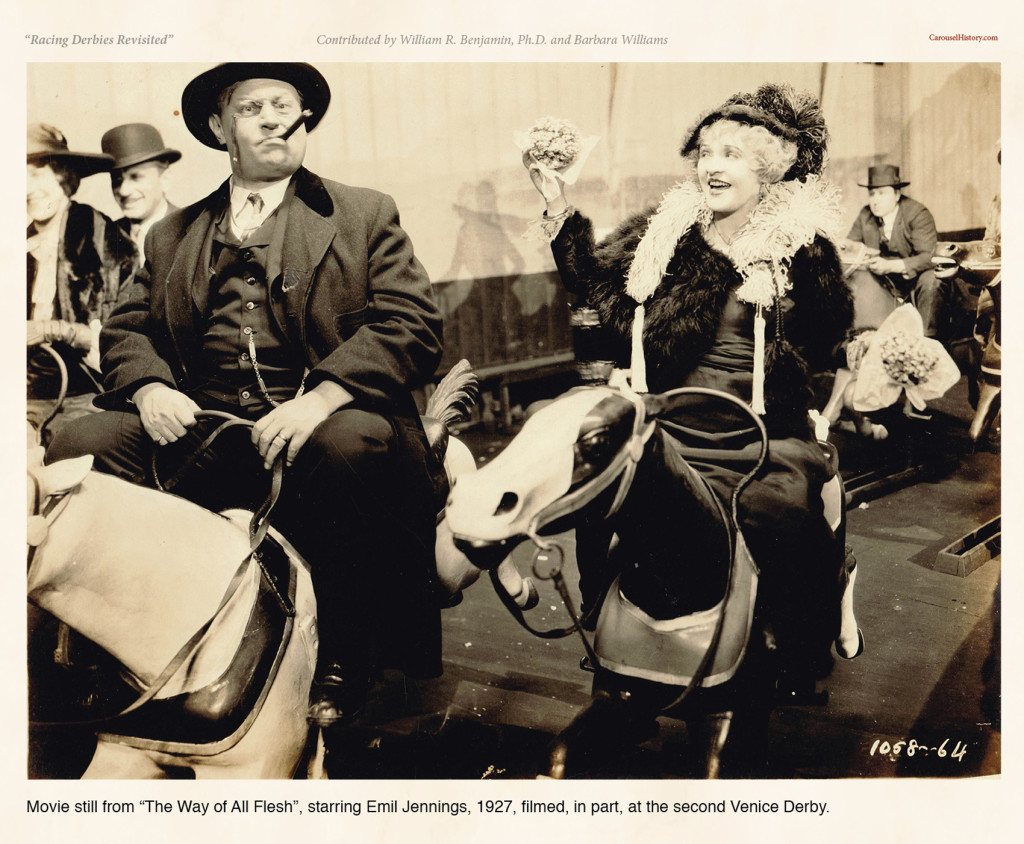
Movie still from “The Way of All Flesh”, starring Emil Jennings, 1927, filmed, in part, at the second Venice Derby.
After the devastating fire, Prior & Church came forth with a commitment to rebuild and, true to their word, installed a larger Derby in 1921 that had 56 horses with double saddles so as to accommodate two riders per horse. This Derby remained on the Venice Pier until the pier closed in 1946(4, 36).
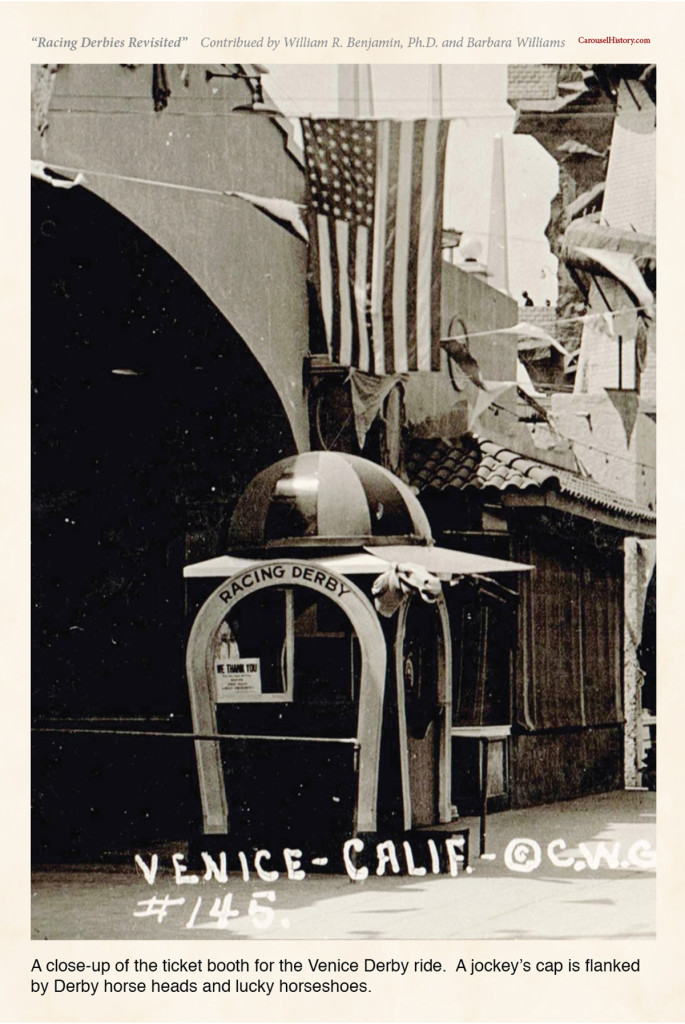
A close-up of the ticket booth for the Venice Derby ride. A jockey’s cap is flanked by Derby horse heads and lucky horseshoes.
The 1925 annexation of Venice by Los Angeles ended Prior & Church’s intentions of constructing an amusement pier of their own next to the existing Venice Pier. The new overseers did not want another amusement pier. In fact, if anything, they wanted the existing piers to be gone (27). The battle between supporters of the amusements and the opposing clergy was unending as was political corruption regarding maintaining the infrastructure of Venice. Many believed it would be best if all of the amusements and canals were just gone (32).
After closure of the pier, before the ride could be removed – “A spectacular fire of unknown origin swept through the now-abandoned amusement zone on the historic Venice pier. A crowd of 10,000 looked on as 11 fire companies battled the flames… Damaged in the fire were such landmarks as the Ship Café, Racing Derby, Dragon Slide and Merry-Go-Round(37).”
The Derby was then sold and went to Whitney’s Playland at the Beach in San Francisco, advertised as Playland’s new $90,000 ride(38).
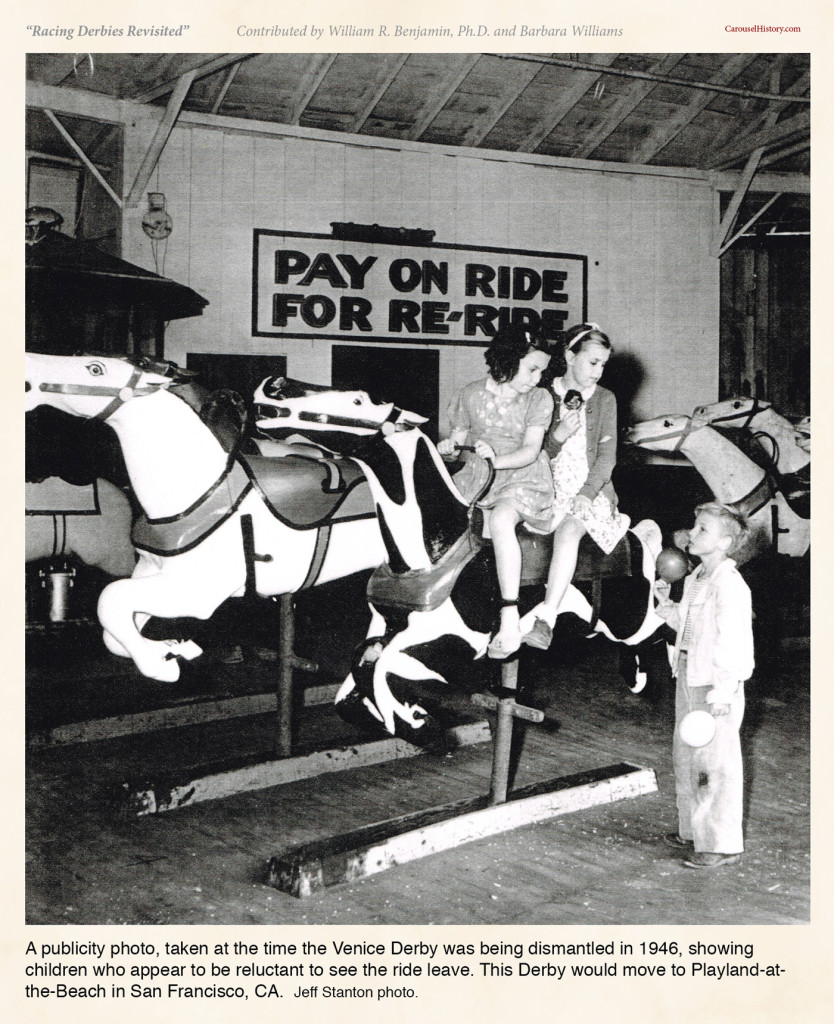
A publicity photo, taken at the time the Venice Derby was being dismantled in 1946, showing children who appear to be reluctant to see the ride leave. This Derby would move to Playland at the Beach in San Francisco, CA.
Documenting the Ocean Park and Venice Derbies
The Derby drawing in the 1918 Prospectus (shown here) shows 40 horses which matches the number of horses on Ocean Park’s first Derby. It is shown in an outdoor setting which is consistent with Venice’s first Derby with the tent coverings absent in order to show the ride. The illustration seems to be a combination of the two Derbies. The publicity photo with the soldiers was used in the Prospectus to enhance the promotion of the ride. Below Tom Prior’s picture, it reads, “Col. Thos. W. Prior, Dean of the Amusement World and Father of the Great American Racing Derby”. Prior is quoted as saying, “This ride is going into every amusement park in America”. We also see his signature. Richard Conception collection.
Sizes of Ocean Park and Venice Derbies
The resources from which we extracted information for this article have conflicting information for the size of the Ocean Park Derby’s platform and the number of horses on the first Venice Derby ride.
The 1918 Great American Racing Derby prospectus (39) gives the following statistics for platform sizes and number of horses that go with each –
Platform Size Number of Horses
70 ft. 48
80 ft. 56
90 ft. 64
100 ft. 72
Ocean Park Derby – There are two platform sizes given in two different sources – 72 ft. (4) and 74 ft. (28). Neither matches the formula given in the prospectus. The closest match would be a 48-horse Derby with a 70 ft. platform. But, the horse count is listed as 40 (4). It would have had a 60 ft. platform.
Venice Derbies – We found conflicting statistics about the number of horses on the first Venice Derby. We found 48 and 56 (3) and 64 (4).For the second Venice Derby the count is 56(4). Since the second Venice Derby is described as being larger than the first one (4), the 56 and 64 counts for the first Venice Derby seem improbable. 48 is more likely.
Above left; A single-saddle, Williams-style Derby horse in a southern California location. This would have been like Venice’s first Derby’s horses. Above right; Depicted is a drawing of the “carousel” horse on the premises. “Look for the Pink Carousel Horse” reads the reverse, advertising the Carousel House apartments and hotel in Laguna Beach.
Racing Derbies Revisited….
Contributed by William R. Benjamin, Ph.D. and Barbara Williams
<<< PREVIOUS – NEXT >>>
PART 1 – PART 2 – PART 3 –
PART 4 – PART 5 – PART 6 –
SUMMARY OF RIDES
<<< PREV – PART 1 – PART 2 – PART 3 – PART 4 – PART 5 – PART 6 – RIDES – NEXT >>>

